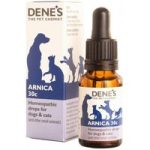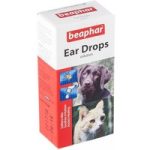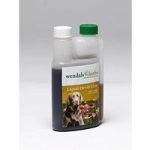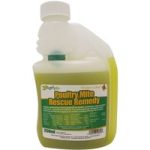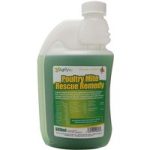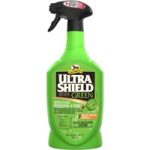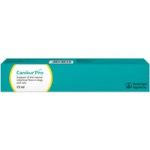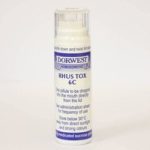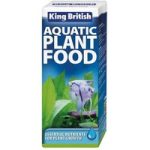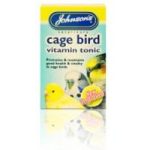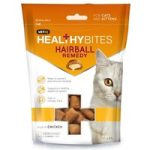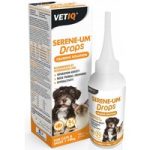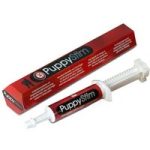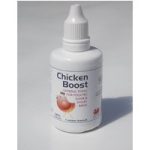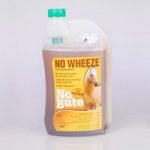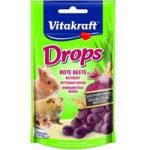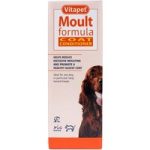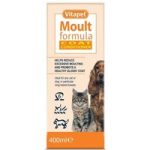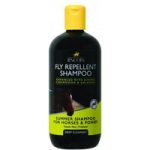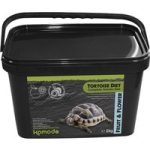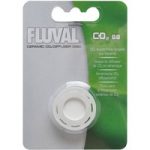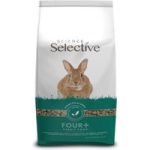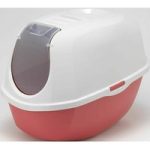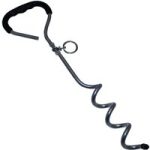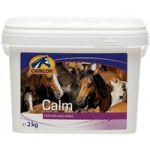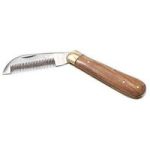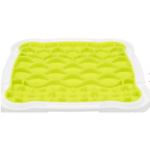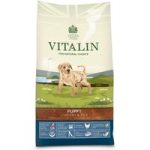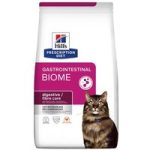HomeoPet Cough Homeopathic Remedy – 15ml Bottle
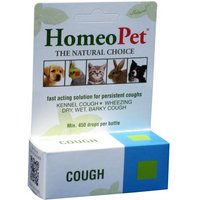
Homeopathic medicine provides relief from kennel cough, bronchitis and other types of persistent coughs. Dosage DOGS/CATS: Under 20 lbs/10 kg, 5 drops; 21-60 lbs/ 10-30 kg, 10 drops; 61-100 lbs/ 30-45 kg, 15 drops; over 100 lbs/45 kg, 20 drops. In acute cases (those with sudden onset), the doses can be given every 15 minutes, up to 4 doses. For cases that are not acute (chronic, long term problems), one dose 3 times daily. Once a response is seen, administration should be reduced to 2 times daily and eventually once daily. If reduction causes symptoms to worsen, original dosing may be continued a little longer before reducing. If the product is working well and dosing is not reduced, an aggravation of symptoms from overuse may occur. Stopping the product for 3 days will reverse the symptoms, and then treatment can begin as if using for the first time, weaning down as mentioned above. Under 1 lb: All pets under 1 lb should be dosed by putting 2 drops in the drinking water daily. SMALL MAMMALS: Rabbits, ferrets, hamsters and pot bellied pigs can be dosed by weight as for cats and dogs in previous section. For severe cases a drop can be diluted in 1 ml of water or other oral rehydration fluid and given to the patient orally, taking care to avoid aspiration of the fluid into the respiratory tract by the patient. 3 doses whose volume is appropriate to the size of the patient should be given from the diluted product over a 24 hour period, e.g. 2 drops for a mouse, 4 drops for a large guinea pig. For acute cases it can be repeated as for cats and dogs in previous dosing section. ADMINISTRATION: Optimally, the liquid preparation should be dropped directly into the mucous membrane of the mouth including lips; ideally in dogs by pulling out the labial pouch, and in cats by raising the head until the mouth opens. Where an animal finds this distressful, or an owner is unable to comply, the medication can be put in the food, water or milk. Where animals are sensitive to the odor of the alcohol preservative, a 10-20 minute period should be allowed for dilution and evaporation before the liquid or food is presented to the patient. Occasionally, animals will shake their heads as a response to the alcohol preservative; cats may salivate excessively and in these cases, presenting it in food, water or milk works. It can also be added to a sprayer and misted in the air around severely affected patients to calm them down, or dropped around bedding area 3-5 times daily. ADVERSE EFFECTS AND CONTRAINDICATIONS: None known, other than reversible effect of overdosage. Overdosage will result in a return of symptoms after the symptoms have initially disappeared. Where either increased anxiety or a return of symptoms occurs while on the medication, ceasing to use it will alleviate the effect. Patients who are hypersensitive to homeopathic preparations will show response to a single dose, which may not need to be repeated for some time. For this reason therapy should always start with a single dose and should a major response be seen, therapy should not be recommenced until symptoms relapse, and then only a single dose given for maximum effect. Although there is no evidence that there are any safety issues, extra care should always be taken when dealing with pregnant animals. Should a suspected adverse reaction be seen or advice needed, please contact HomeoPet LLC. DRUG INTERACTIONS: None known for animal use only. Keep out of reach of children. PHARMACEUTICAL PRECAUTIONS: Store at room temperature, out of direct sunlight, and away from strong odors. USER SAFETY: No adverse effects have been recorded. There have been reports to the company of beneficial rather than adverse effects. As homeopathics are active in humans, care is advised when handling product. Although a long history of homeopathics used in humans shows a very high safety margin. ENVIRONMENTAL IMPACT: To date none found Aconitum napellus 30c, 200c,1M (Monkshood) Commonly known as andldquo;monkshoodandrdquo; or andldquo;wolfandrsquo;s bane,andrdquo; It is a bluish flowering herb native to Western andamp; Central Europe. Ammonium carbonicum 12x (Tartar emetic) a salt with the chemical formula (NHandacirc;andsbquo;andbdquo;)andacirc;andsbquo;andsbquo;COandacirc;andsbquo;andfnof; Antimonium tartaricum 6c (Tartar Emetic) also known as potassium antimonyl tartrate, potassium antimontarterate, or emetic tartar, has the formula Kandacirc;andsbquo;andsbquo;Sbandacirc;andsbquo;andsbquo;(Candacirc;andsbquo;andbdquo;Handacirc;andsbquo;andsbquo;Oandacirc;andsbquo;anddagger;)andacirc;andsbquo;andsbquo; Arsenicum Album 6c (White Oxide of Arsenic) Homeopathic arsenicum album is a dilution of the ingredient to where there is little or no arsenic remaining. Arsenicum iodatum 9x (Arsenic iodide) a compound with the formula AsIandacirc;andsbquo;andfnof; Avena sativa 4x (Oat straw) The oat, sometimes called the common oat, is a species of cereal grain grown for its seed, which is known by the same name. Belladonna 30c (Deadly nightshade) a herbaceous plant in the nightshade family. It is native to Europe, North Africa, and Western Asia. Bryonia alba 6c, 30c (Wild hops) a genus of flowering plant in the gourd family. Bryony is its best-known common name. They are native to western Eurasia and adjacent regions, such as North Africa, the Canary Islands and South Asia. Carbo vegetabilis 12x (Vegetable charcoal) Carbon is the most abundant element on earth, and is also an important element of the human body. It occurs in impure form in petroleum, charcoal and various sediments. In its pure form, in graphite and diamonds. Causticum 30c (Caustic potash) an inorganic compound with the formula KOH, and is commonly called caustic potash. Along with sodium hydroxide, this colorless solid is a prototypical strong base. Coccus cacti 6c, 30c (Cochineal) Plants belonging to the species called Anamirta paniculata bear fruits that are generally called Cocculus indicus or the Indian cockle. Plants belonging to the species are lofty, wooded, climbers that are native to eastern regions of India as well as the Malay Archipelago. Cuprum metallicum 30c (Copper metal) an element with the symbol Cu Drosera rotundifolia 4x, 6c, 30c, 200c (Sundew) The range of the sundew genus stretches from Alaska in the north to New Zealand in the south. The centers of diversity are Australia, with roughly 50% of all known species, and South America and southern Africa, each with more than 20 species. A few species are also found in large parts of Eurasia and North America. Echinacea angustifolia 4x, 200c (Purple cone-flower) is a North American plant species in sunflower family. It is widespread across much of the Great Plains of central Canada and the central United States, with additional populations in nearby regions. Eupatorium perfoliatum 30c (Bone-set) a North American perennial plant in the aster family. It is a common native to the Eastern United States and Canada, widespread from Nova Scotia to Florida, west as far as Texas, Nebraska, the Dakotas, and Manitoba Hepar sulphuris calcareum 200c (Calcium sulphide) A compound with the formula CaS. This white material crystallizes in cubes like rock salt. Hyoscyamus niger 30c (Henbane) originated in Eurasia, and is now globally distributed as a plant grown mainly for pharmaceutical purposes Ignatia amara 6c, 30c, 200c (St. Ignatiaandrsquo;s bean) A tree in the Loganiaceae family, native to the Philippines, particularly in Catbalogan and parts of China Ipecacuanha 6c, 30c (Ipecac root) Carapichea ipecacuanha is a species of flowering plant in the Rubiaceae family. It is native to Costa Rica, Nicaragua, Panama, Colombia, and Brazil. Its common name, ipecacuanha, is derived from the Tupi ipegaandrsquo;kwandatilde;i, or andldquo;road-side sick-making plantandrdquo;. Kali carbonicum12x, 30c (Potassium carbonate) is the inorganic compound with the formula Kandacirc;andsbquo;andsbquo;COandacirc;andsbquo;andfnof;. It is a white salt, which is soluble in water. Lac caninum 30c (Dogandrsquo;s milk) derived from dogs Lachesis muta 6c, 30c, 200c (Bushmaster) found in South America. Two subspecies are currently recognized, including the nominate subspecies described here. Lobelia inflata 4x, 6c (Indian tobacco) Lobelia Inflata is a species of Lobelia native to eastern North America, from southeastern Canada south through the eastern United States to Alabama and west to Kansas. Mercurius solub 200c (Mercurius vivus. Quicksilver) Mercury is a chemical element with symbol Hg and atomic number 80. It is commonly known as quicksilver and was formerly named hydrargyrum. Natrum muriaticum 30c (Sodium chloride) an ionic compound with the chemical formula NaCl, representing a 1:1 ratio of sodium and chloride ions. Nux vomica 12x, 30c (Poison nut) A deciduous tree native to India and to southeast Asia. It is a medium-sized tree in the family Loganiaceae that grows in open habitats. Passiflora incarnata 4x (Passion flower) Perennial woody vines, mostly from tropical America also found in Asia, Australia and Polynesioan Islands Phosphorus 6c, 30c, 200c (Phosphorus) Phosphorus is a chemical element with symbol P and atomic number 15. As an element, phosphorus exists in two major forms, white phosphorus and red phosphorus. Pulsatilla nigricans 6c (Wind flower) Pastures in Central and Northern Europe and parts of South England Rumex crispus 6c (Yellow dock) a perennial flowering plant in the family Polygonaceae, native to Europe and Western Asia. Scutellaria laterifolia 4x (Skullcap) a hardy perennial herb of the mint family, Lamiaceae, native to North America. Silicea 200c (Pure flint) A sedimentary cryptocrystalizaline form of the mineral quartz. It occurs in nodules in the rocks and often has a glassy or waxy appearance. Spongia Tosta 6c andamp; 30c (Roasted Sponge) a genus of marine sponges in the family Spongiidae Scilla maritima 8x (Sea onion) a species of flowering plant in the family Asparagaceae, it is native to southern Europe, western Asia, and northern Africa. Stannum metallicum 12x (Tin metal) a chemical element with the symbol Sn and atomic number 50. Sulphur 12x (Brimstone) Sulfur is a naturally occurring mineral produced by volcanoes; its presence attributed to rife deposits of sulfur throughout the Earthandrsquo;s crust and upper mantle Valeriana officinalis 4x (Valerian Root) a perennial flowering plant native to Europe and Asia. it bears sweetly scented pink or white flowers that attract many fly species, especially hoverfliesof the genus Eristalis. Veratrum album 6c (White hellebore) a plant of the Liliaceae or Melanthiaceae. It is native to Europe and parts of western Asia….







